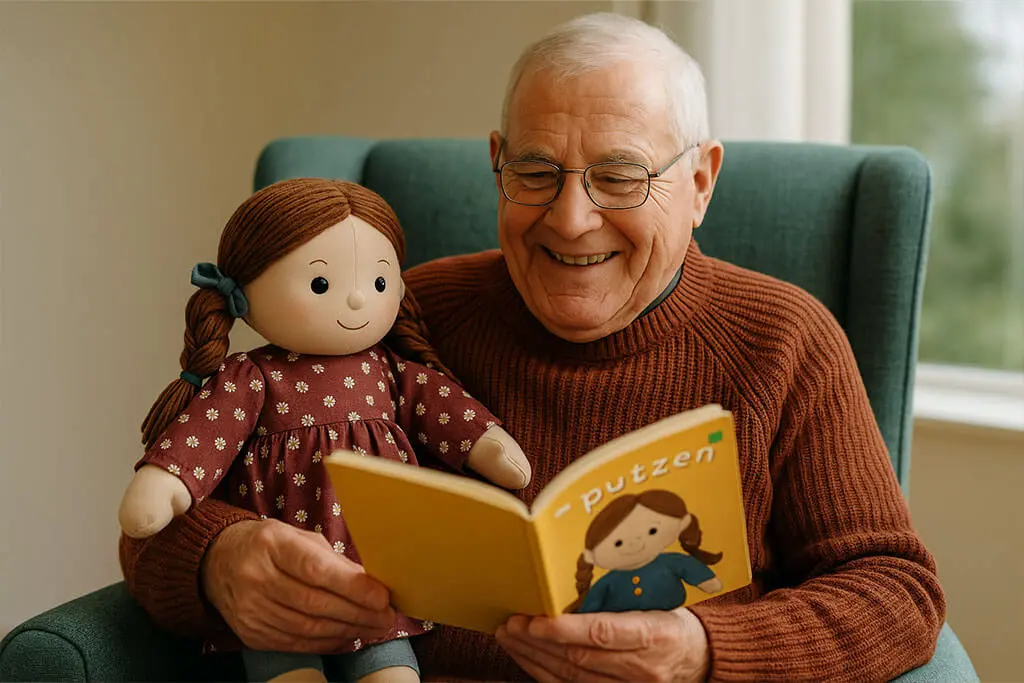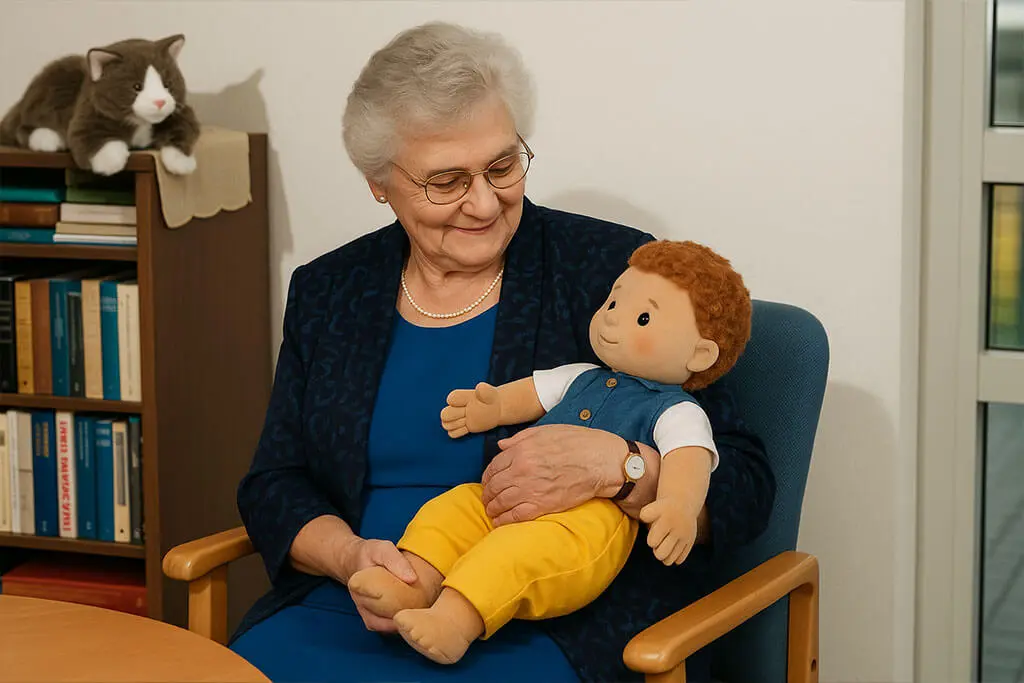The Role of Therapy Dolls in Care
Therapy dolls (or Empathy dolls as they are also known as) aren’t new, but their value in dementia care is only now being properly recognised. They offer something hard to quantify: calm. Not in every case. But often enough that care staff keep reaching for them.
What’s interesting is how quietly they work. A resident distressed by noise, movement or confusion may soften just by holding a doll. It’s not always about memory—it’s sometimes just the weight, the warmth, or the way it fits in their hands.
Some care professionals describe doll therapy as a way to reconnect a person to a part of themselves they thought was gone.
Why People Respond to Therapy Dolls
You won’t find one reason that applies to everyone, but certain themes do emerge.
- Reconnection with identity – People who once raised children or worked in caring roles often respond well. The doll may stir a sense of purpose.
- Sensory comfort – The texture, size, and weight of the doll can feel reassuring, especially in times of agitation.
- Emotional grounding – For someone who feels lost or overwhelmed, cradling a doll offers something stable and familiar.
What matters most is the individual response. If someone finds comfort, it’s doing its job.
When and How to Introduce a Therapy Doll
It’s not about handing someone a doll and expecting an immediate shift. In many cases, the best approach is subtle.

Tips for introducing a doll:
- Leave the doll nearby, perhaps on a chair or bed, and see if they approach it.
- Don’t explain too much. Let the person decide what the doll means.
- Watch their response. If it brings agitation, remove it quietly. If it brings calm, let them lead.
- Once a connection is made, treat the doll with care. Removing it without warning can cause distress.
It’s not manipulation. It’s comfort, when everything else feels out of reach.
Benefits Observed in Care Settings
While formal studies are still catching up, feedback from frontline staff has been clear. When doll therapy works, it works well.
Here are some outcomes care workers have noticed:
- Reduced agitation, particularly during “sundowning” periods
- Better engagement with carers and other residents
- More settled sleep patterns
- Fewer behavioural outbursts
- A reason to get out of bed and begin the day
It won’t suit everyone. But for some, it’s the difference between confusion and calm.
Ethical Considerations
Some argue doll therapy is infantilising. And they’re right to raise that concern—it can be, if handled without sensitivity. But most people offering dolls in care do so with respect and quiet observation.
If someone rejects the idea, that’s fine. If they welcome the doll and care for it—then it becomes part of their world.
The key is never to assume. Let the person guide the experience.
A Note for Families
If you’re visiting someone in care and notice they’ve taken to a therapy doll, don’t be alarmed. It’s not about regression. In many cases, it’s about connection. The doll isn’t pretending to be a baby—it’s offering something solid, gentle, and known.

Some families choose to bring in a doll from home. If you do, make sure it’s safe, soft, and not too heavy. Ask care staff for their view. And be open to the idea that what looks simple might actually be providing a deep sense of peace.
Choosing a Suitable Therapy Doll
For some individuals, the right doll can bring comfort, reduce distress, or even create moments of connection that hadn’t been seen in some time. When introducing one, it helps to choose something soft, realistic, and calming in appearance.
We offer a small range of therapy and empathy dolls that have been selected with care environments in mind. Options like Tom and Mia are designed to be comforting to hold and easy to position in the lap or on a chair.
There’s no single right choice—it often depends on the person’s preferences and background. But when the right connection is made, it can make a meaningful difference to their day-to-day wellbeing.
Tell us your story
If you have an experience you’d like to share with us regarding therapy dolls and the role they play in care, we would like to hear from you. Email info@activitiesforcare.com.au with the subject ‘The Role of Therapy Dolls in Care’, your name and/or company, and we will feature your story as part of future articles on the subject.